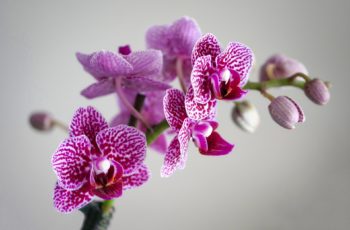If you're wondering how to care for orchids then is most likely the Phalaenopsis orchids that you are thinking about. Phalaenopsis orchids are the most common kind of orchid, often found in home supply stores.
Often gifted, they are beautiful plants that thrive in a pot and make a great addition to a house. Unfortunately, many don't know how to take care of them and as a result, they wither and die.
Here are a few tips that will help you take care of your orchids.
How to Care for Orchids Starts with No Indirect Sunlight
Despite being a tropical plant, orchids do not tolerate direct sunlight very well. Upon exposure to it, they develop burns at a quick pace.
To prevent scorching of the plant, consider either placing it on a windowsill or in a shady area. Despite the intolerance to sunlight, they should receive a minimum of six hours a day of it.
Another option for orchids is to purchase a growing light if you find you cannot provide the proper conditions for it. Simply turn on the light for six hours daily, and keep it in close proximity to the plant.
Fertilize Your Phalaenopsis Orchid Frequently
Caring for Phalaenopsis Orchids includes weekly fertilizing to keep its leaves and flowers on point.
There are two types of fertilizer: liquid fertilizer, usually available in a spray bottle, and pellet spikes, which are shoved into the potting mixture of the orchid and left there. Opt for the liquid form, as not only does it allow you to control the amount your orchid receives, it is also absorbed much more easily.
By fertilizing weekly, your orchid will thrive and be able to hold onto its blooms for a longer period of time. Under fertilizing results in weaker blooms and an overall frail plant.
The Ideal Watering Schedule and Potting Mix
Depending on what mixture you choose for your orchids, you may find yourself watering once a week or more.
Bark potting is more porous and retains little water which means the roots do not have ample time to absorb what they need. Moss potting holds water like a sponge, and therefore less watering is needed. A mixture of both potting materials is recommended.
In any case, be extremely careful when watering. Too much water can cause root rot, as water falls to the bottom of the pot and does not have time to be absorbed.
Root rot is a death sentence for your plants, and death is all but certain. When it comes to orchids, it is better to be stingy on water than generous; thirsty orchids can be saved, overwatered ones, not so much.
Learning how to care for orchids by following these tips is fairly simple and caring for orchids becomes a whole lot clearer and easier.
Many think that orchids are fragile plants that, once gifted, wither away. But that is not true. It is possible to sustain your orchids for decades if proper attention is paid to them.


